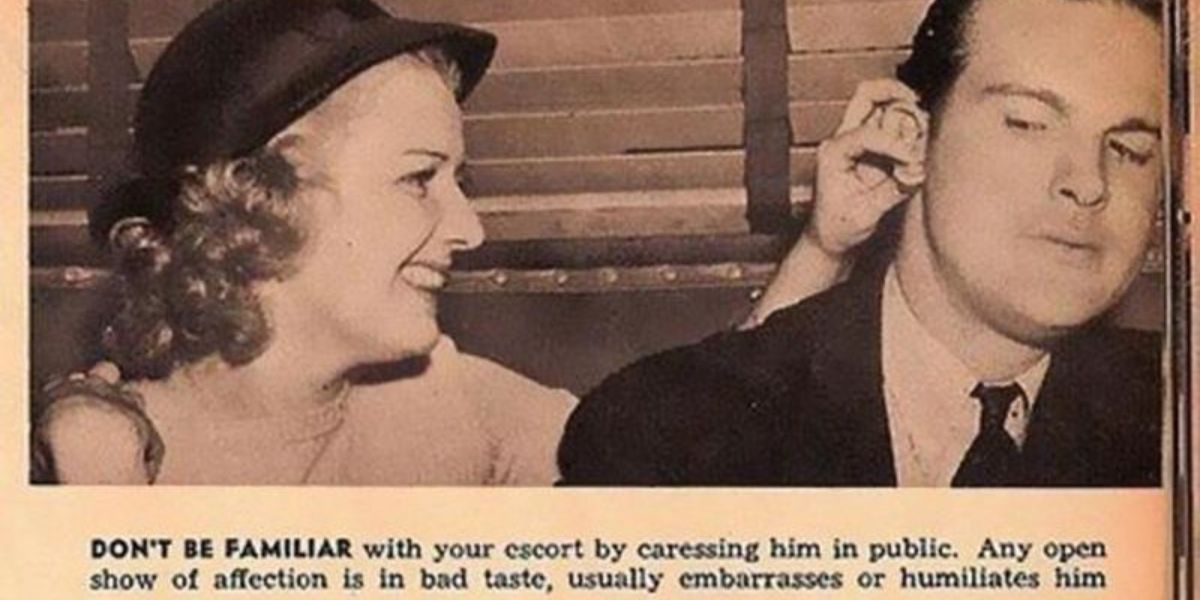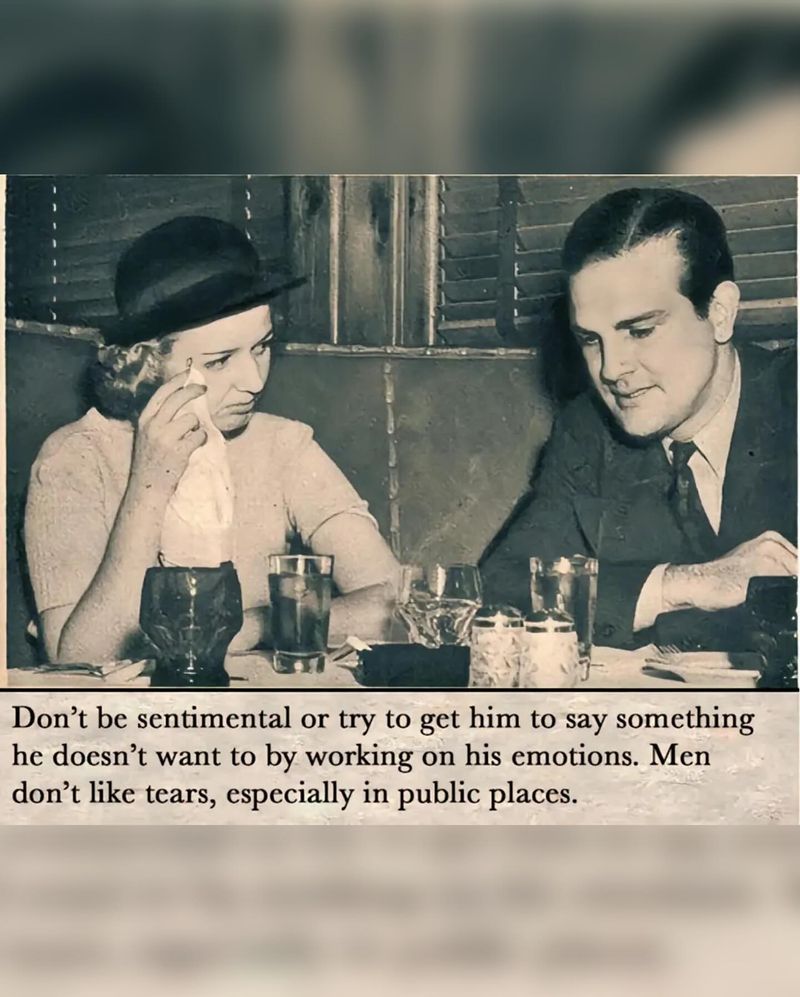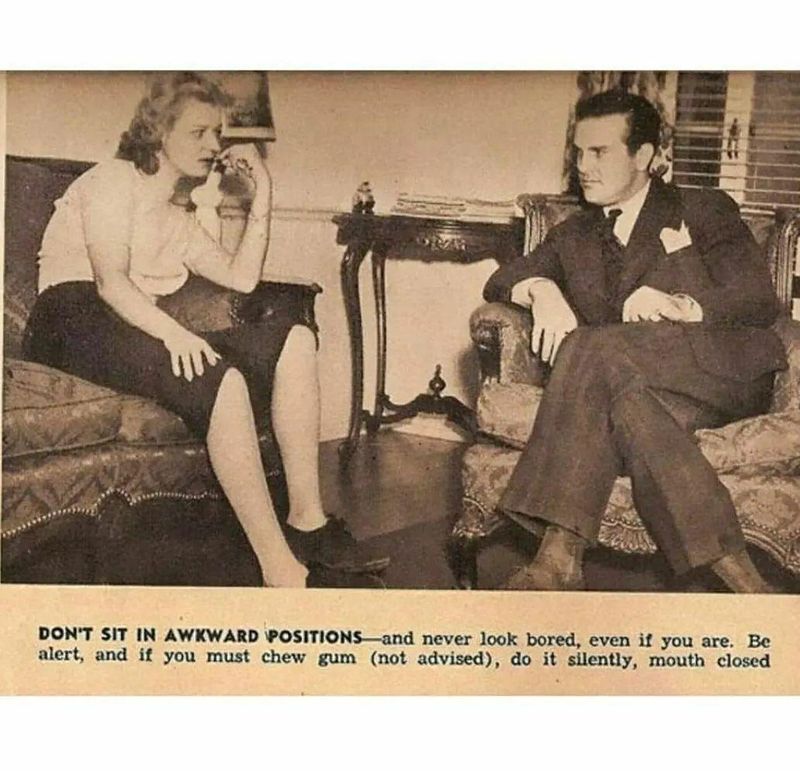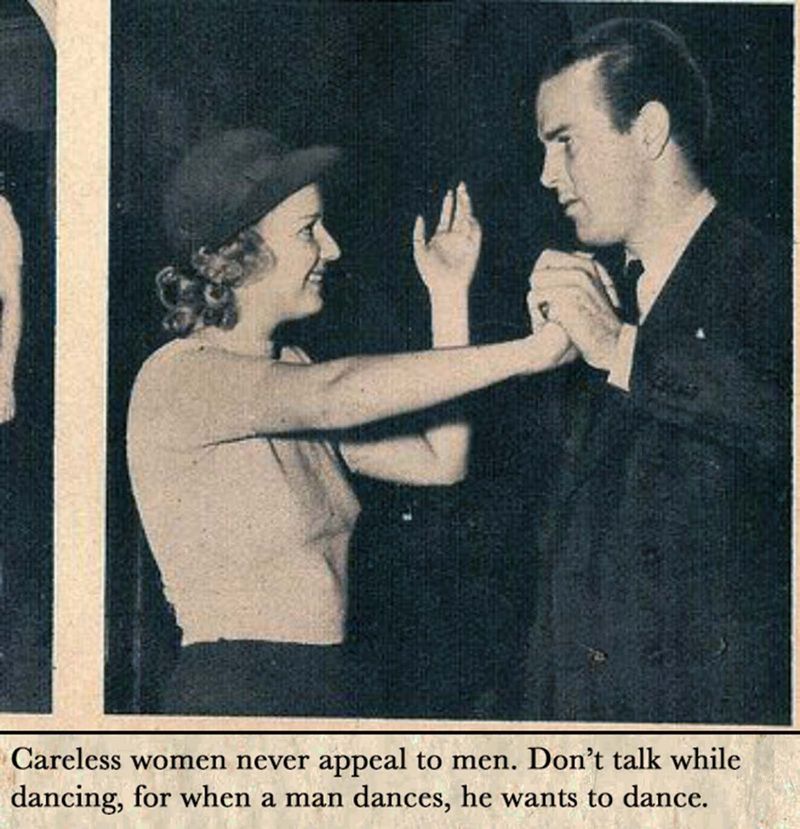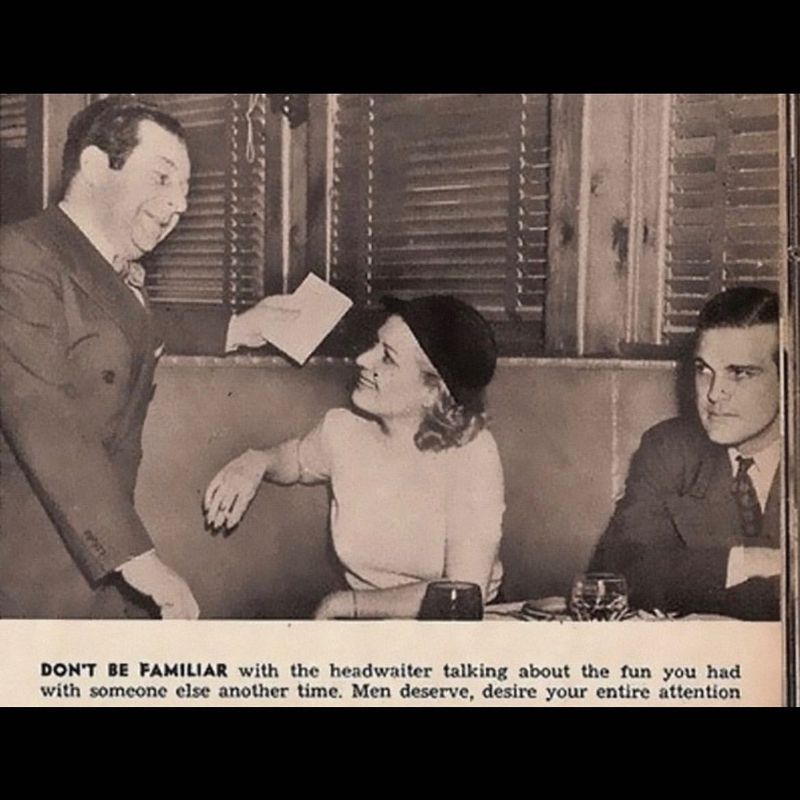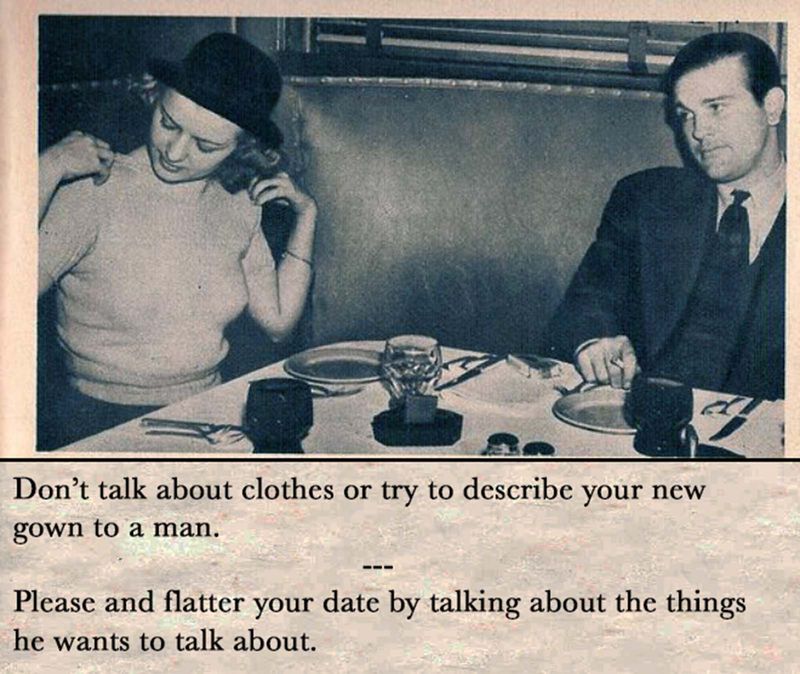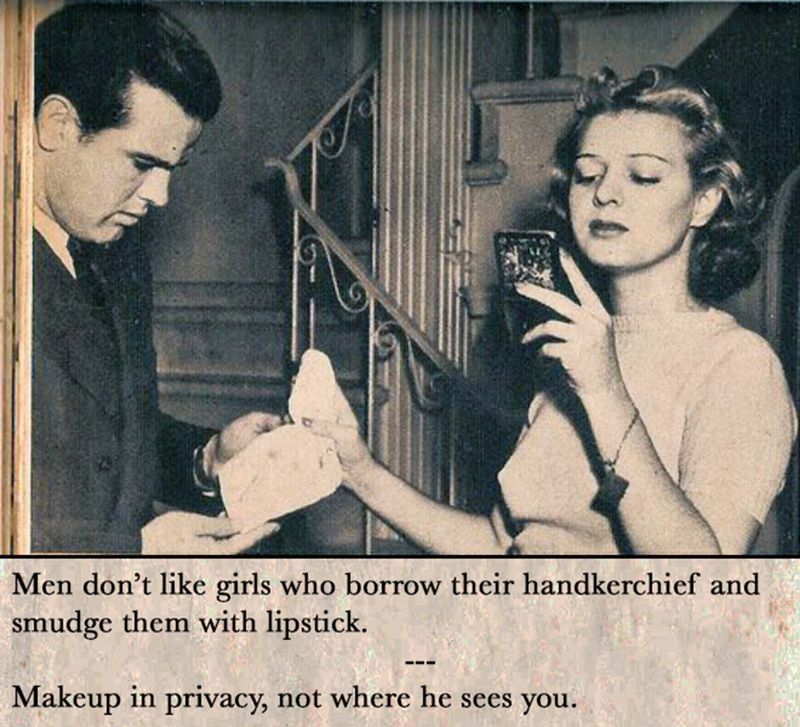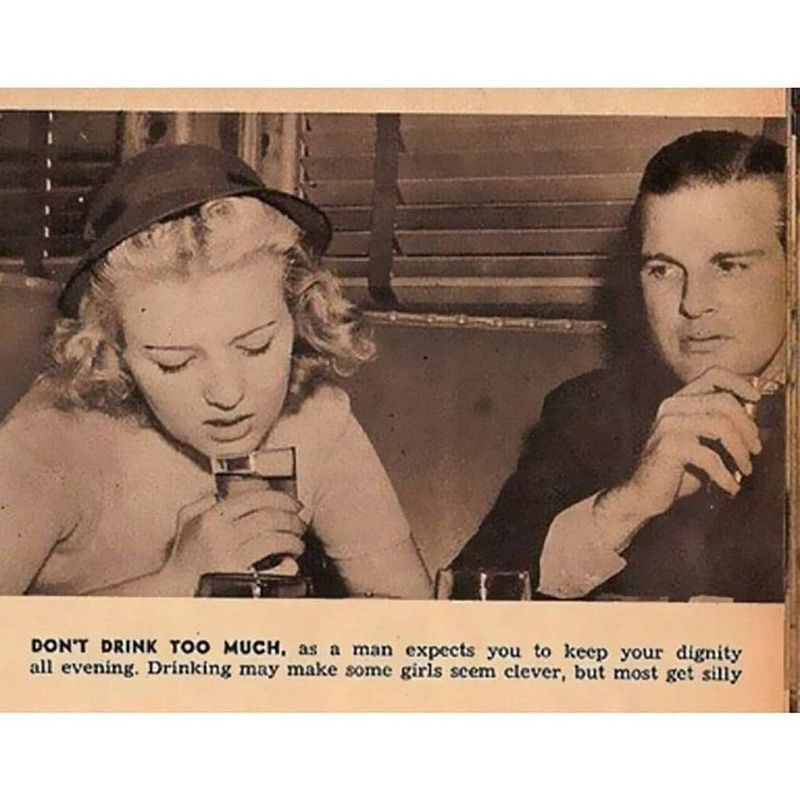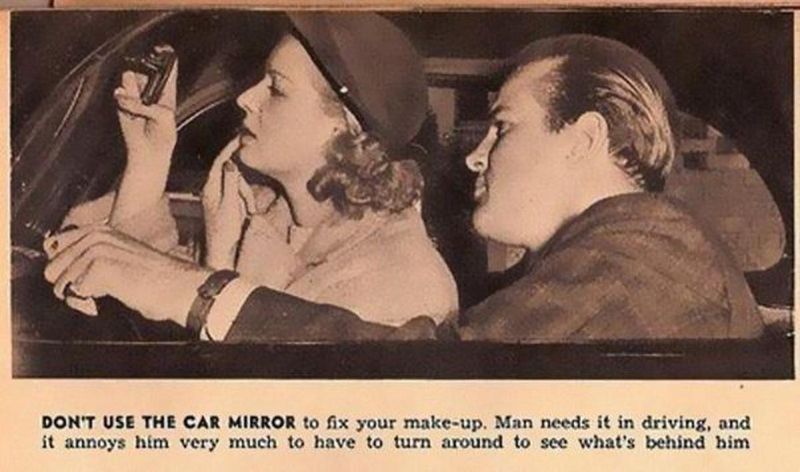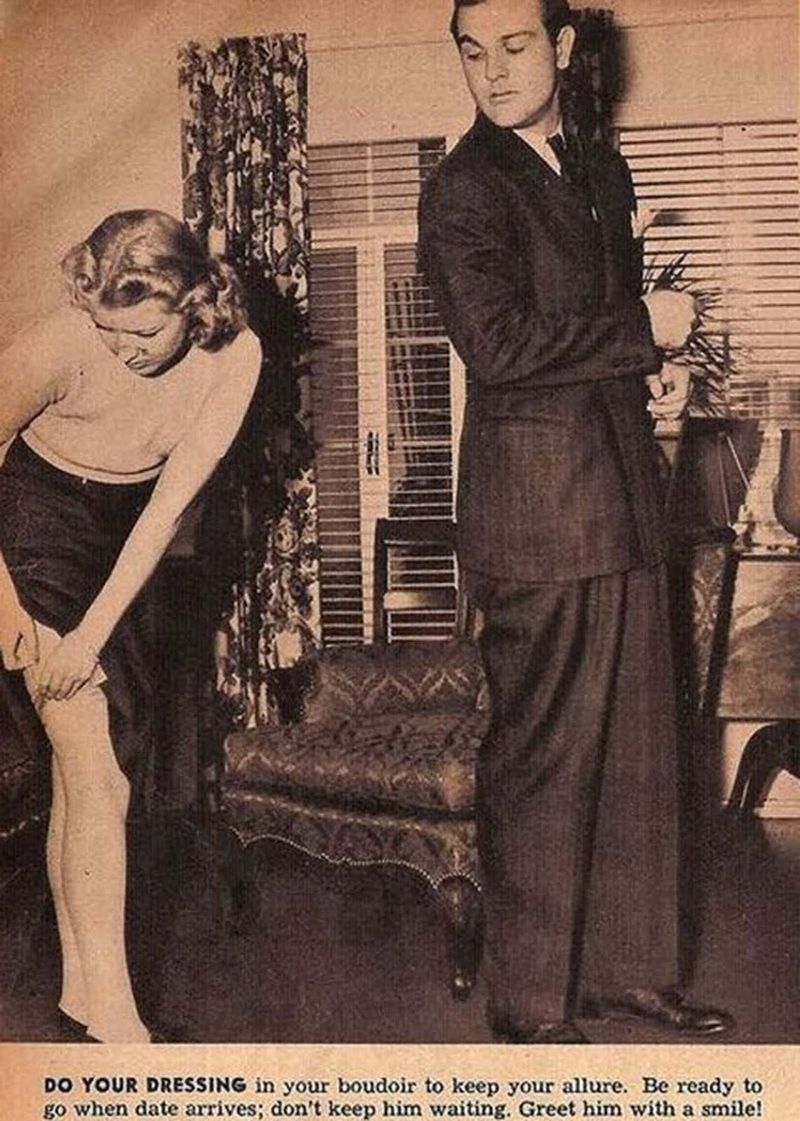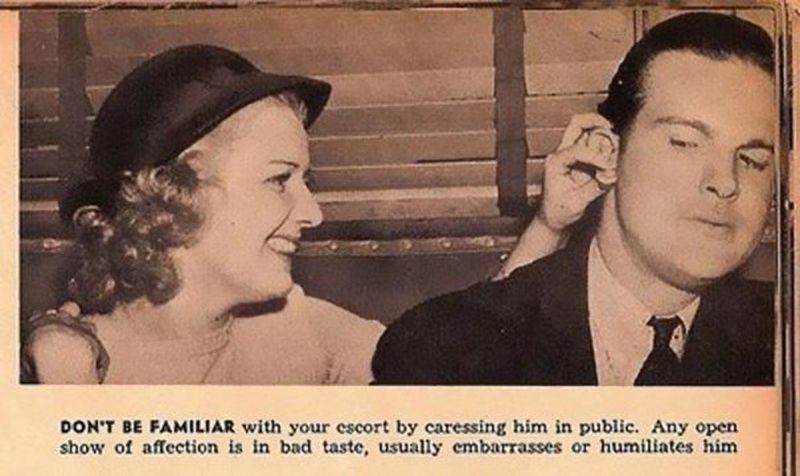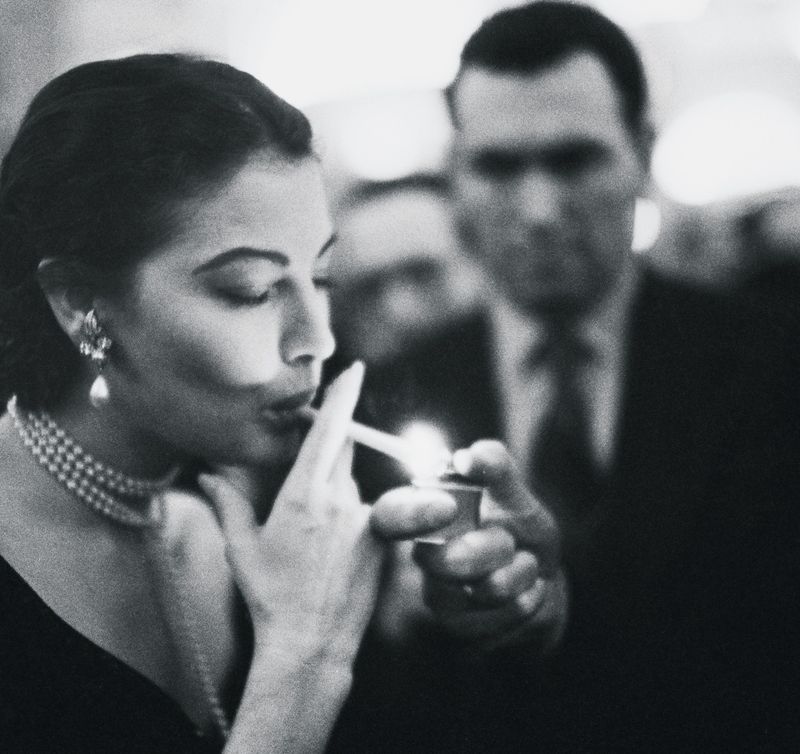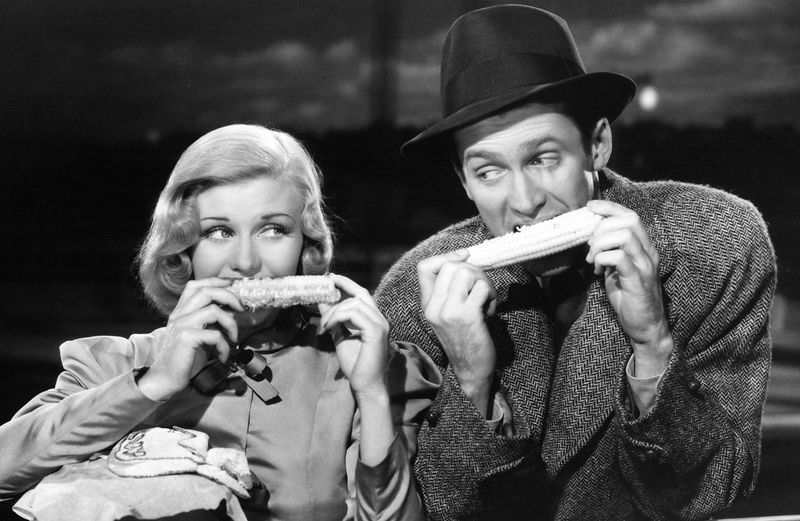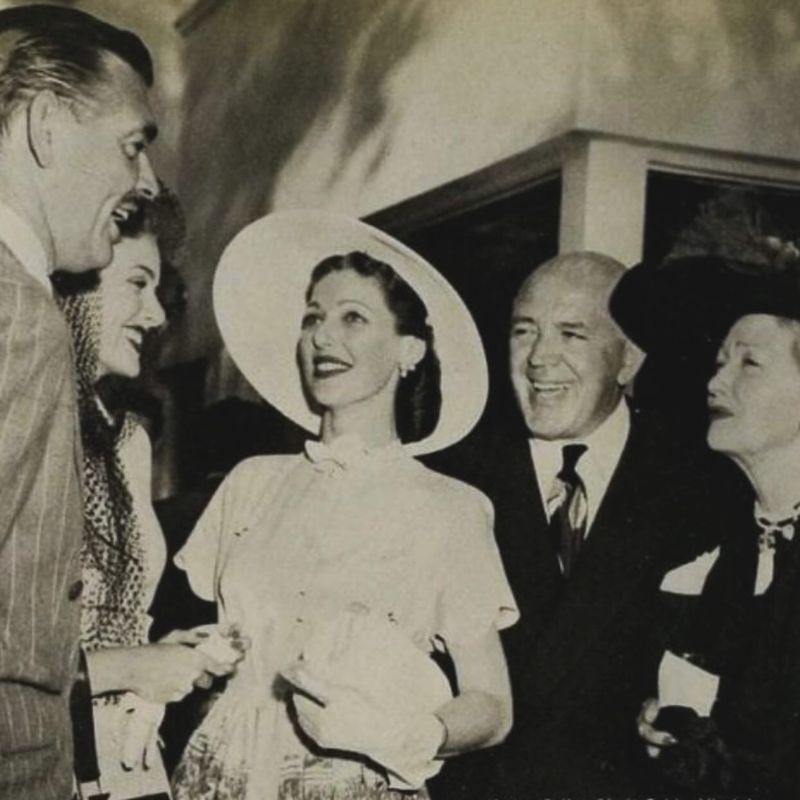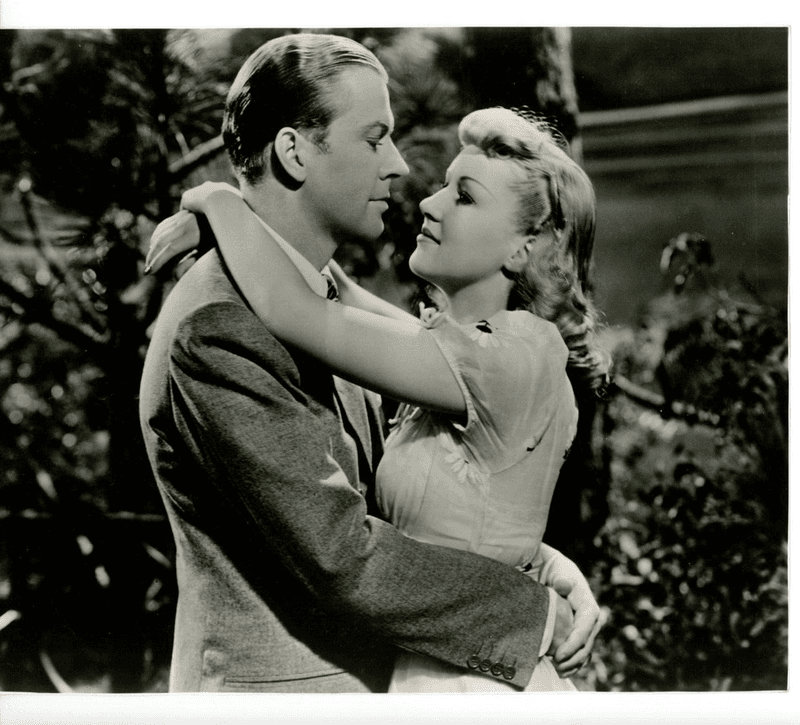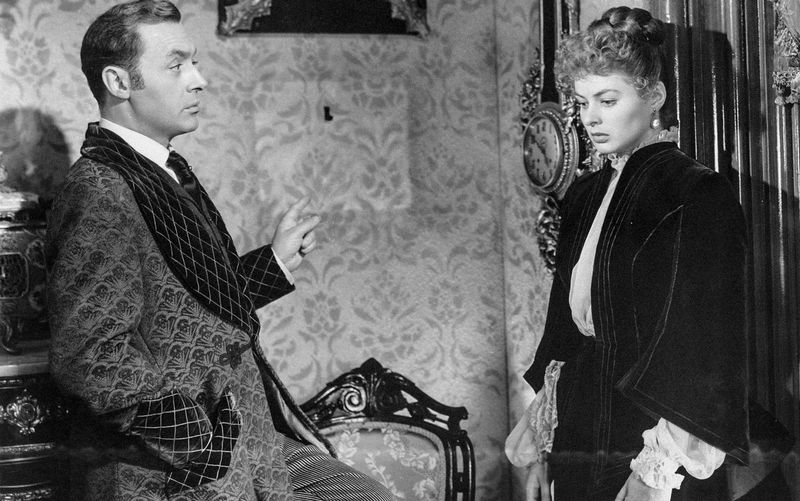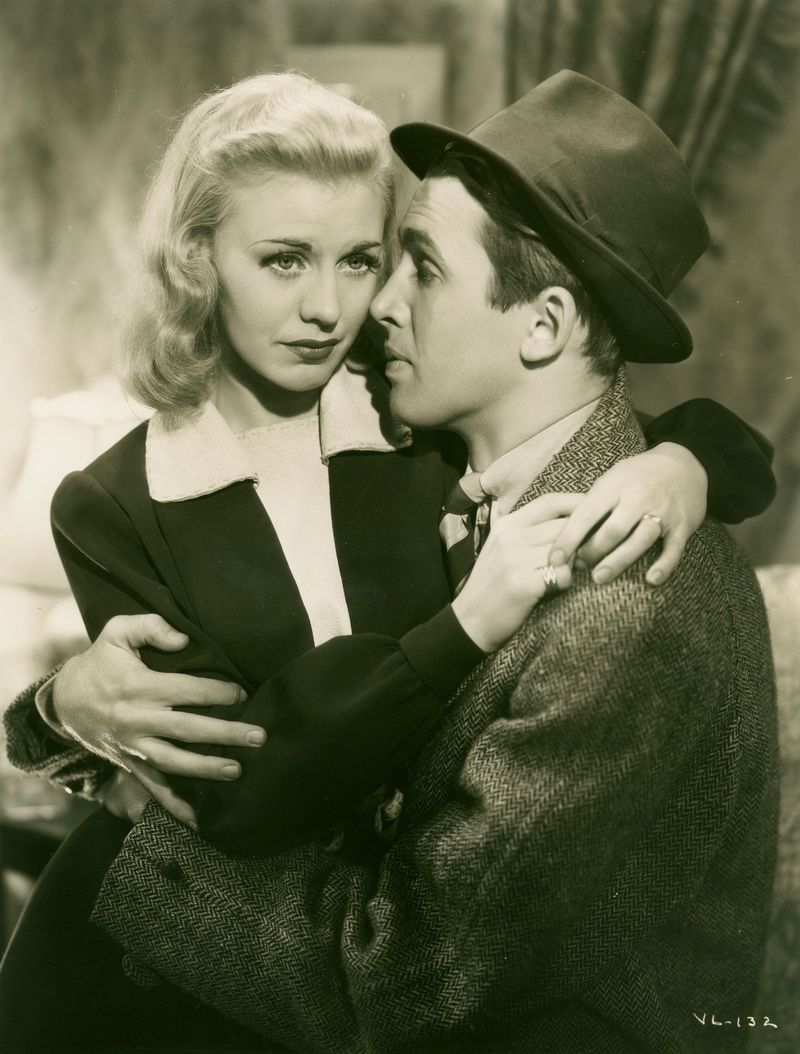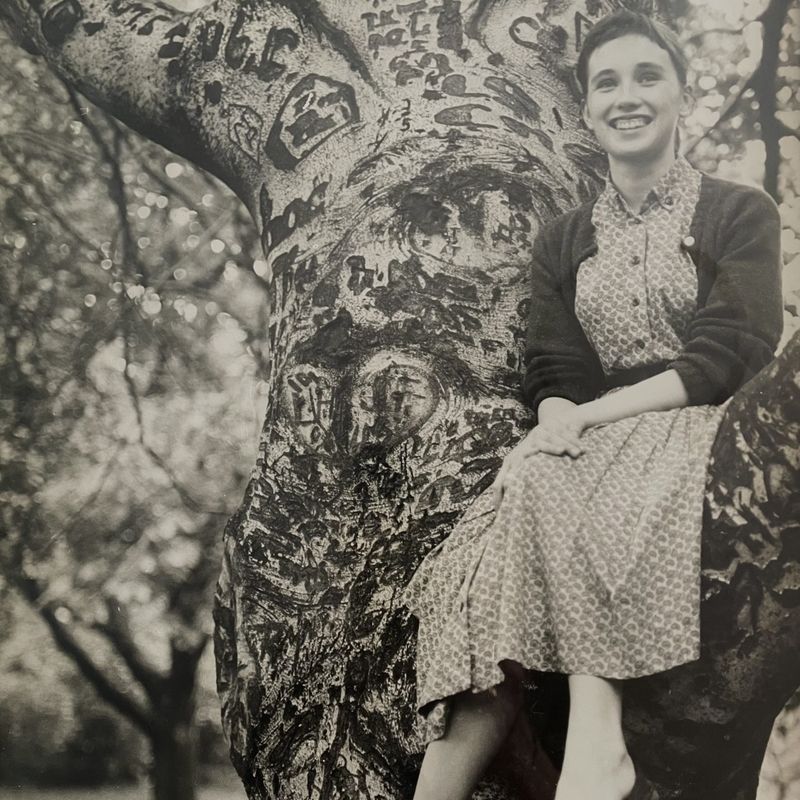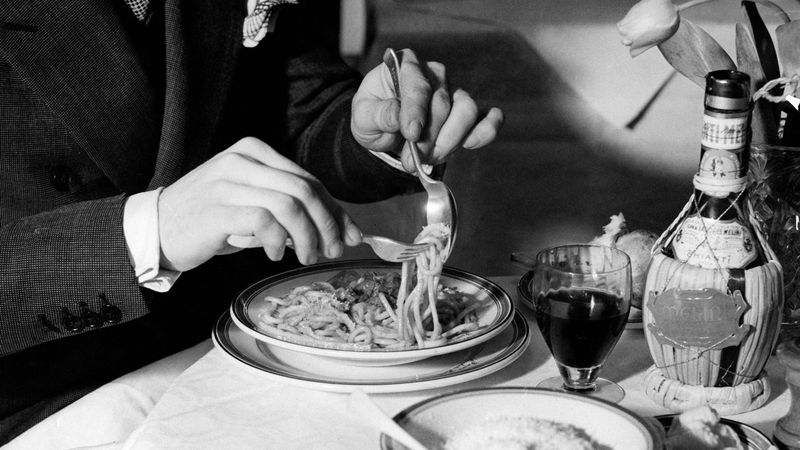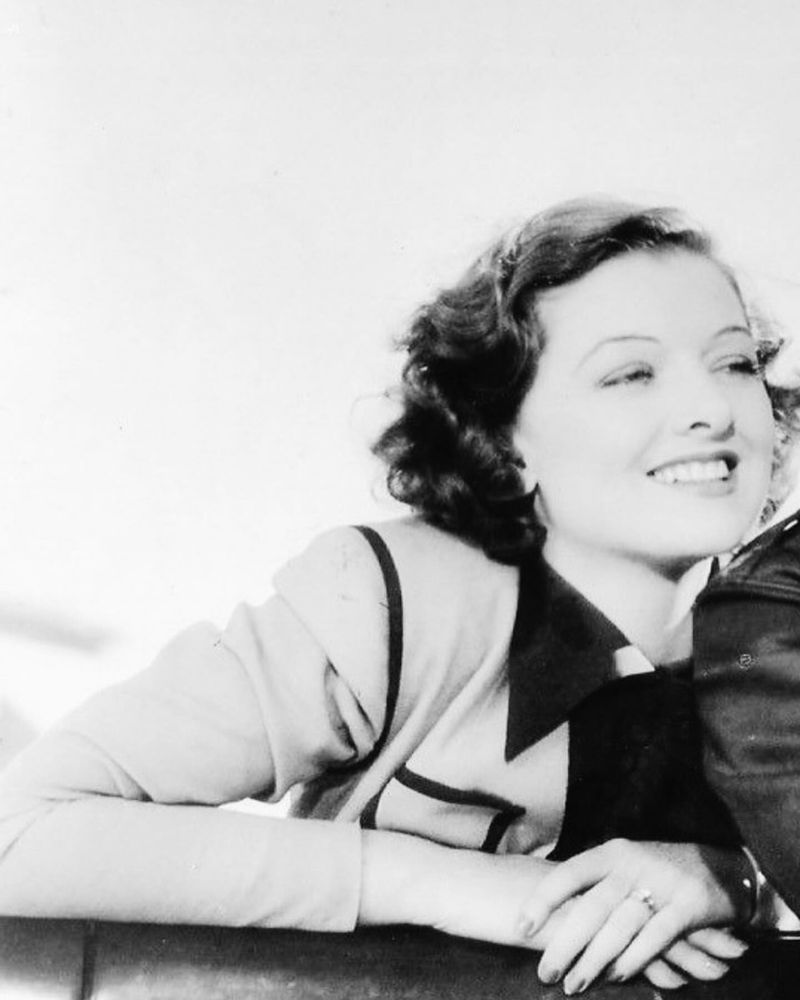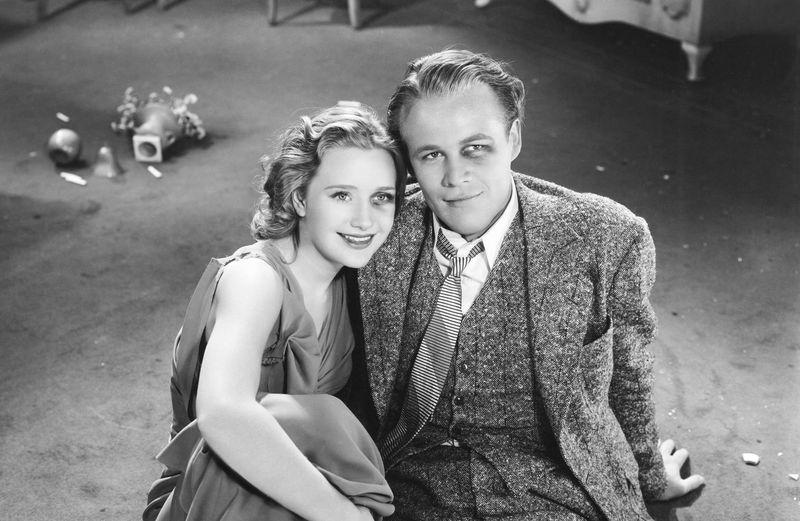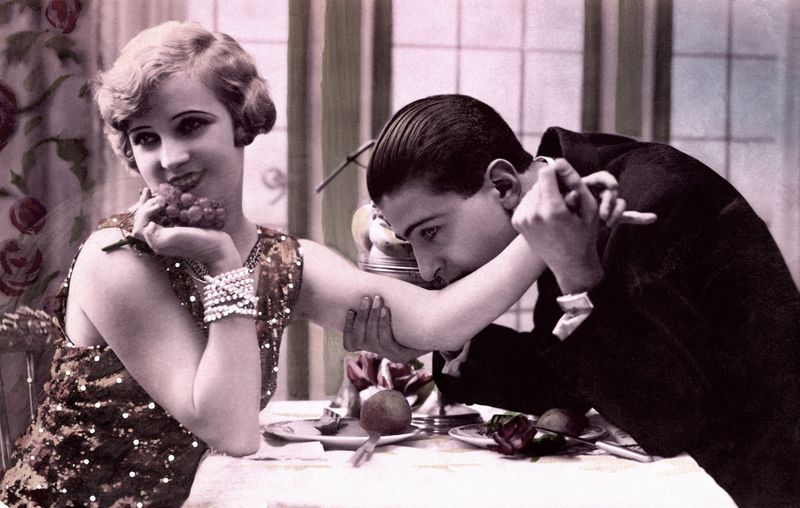Step back into the 1930s and explore the charming yet intriguing advice given to women navigating the world of dating. These 22 vintage tips offer a fascinating glimpse into the past, blending etiquette and societal expectations of the time.
Each tip reflects the values and customs that defined social interactions, particularly for women seeking love.
From understanding how to gracefully engage in conversation to mastering the art of modesty, let’s unravel the dating mysteries of 1938, where a simple smile could seal the deal.
Embrace the elegance, humor, and sometimes perplexity of these old-fashioned dating guidelines.
1. Tread Lightly on Emotions
Navigating emotions with care was a key part of dating in 1938. Women were advised to tread lightly, showing interest but not overwhelming their date with intense feelings. Emotional restraint was seen as a virtue, allowing relationships to develop slowly and steadily.
Engaging in light-hearted conversation and maintaining a pleasant demeanor were essential. This approach was thought to keep the relationship balanced and harmonious.
Women were encouraged to show empathy while not overburdening their partners with personal issues or drama.
Such guidance reflects the societal norms of the era, emphasizing calmness and composure in romantic pursuits.
2. Sit Pretty and Look Alert
In the 1930s, appearance and poise were paramount. Women were advised to sit pretty and look alert during dates. This meant maintaining good posture and displaying an appearance of attentiveness and interest.
The concept was to convey engagement without appearing overly eager. By sitting gracefully and showing active listening, women were seen as appealing companions. These societal expectations prioritized the physical aspects of interaction, hinting at the importance placed on visual appeal.
Such guidance illustrates the era’s focus on decorum and the subtle art of garnering attention through elegance and presence.
3. Silence on the Dance Floor
The dance floor in 1938 was a place for silent communication. Women were encouraged to let their movements speak, fostering a deeper connection through shared rhythms. Speaking was deemed unnecessary, as the music guided their interaction.
This quietude was seen as an opportunity to let the chemistry between partners flourish. Embracing silence allowed for a focus on the physical expression of the dance.
By valuing non-verbal communication, this advice highlights the unique cultural ambiance of the time, where a simple dance could reveal much about compatibility and mutual attraction.
4. No Name-Dropping, Please
In the 1930s, modesty in conversation was encouraged, particularly when it came to personal connections. Women were advised against name-dropping, as it could appear boastful or insincere.
Instead, the focus was on genuine interaction without relying on associations to impress. The idea was to foster a sincere and humble atmosphere in discussions.
This advice underscores the value placed on humility and authenticity in social settings. By avoiding the temptation to name-drop, women were seen as more genuine, fostering deeper, more meaningful connections with their dates.
5. Stick to His Favorite Topics
In 1938, women were encouraged to focus on their date’s interests during conversations. The idea was to stick to topics that intrigued him, fostering engagement and connection.
Showcasing genuine interest in his favorite subjects was considered flattering. It demonstrated attentiveness and a willingness to engage, often leading to more successful and enjoyable dates.
This approach reflects the traditional gender roles of the era, where a woman’s role was often seen as supportive. It highlights the social dynamics of the time, emphasizing men’s interests as a priority in dating interactions.
6. Always Be Photo-Ready
Being photo-ready was essential for women in 1938, as capturing moments was popular. Women were advised to maintain a poised appearance, always ready for a snapshot.
This meant paying attention to attire, grooming, and demeanor at all times. The goal was to reflect grace and style, whether in candid moments or posed pictures.
Such advice underscores the cultural emphasis on appearance and memory-making. It reflects the value placed on creating lasting impressions and preserving them through photography, highlighting the era’s appreciation for elegance and beauty in everyday life.
7. Say ‘Yes’ to Spontaneity—But Not Too Much
Spontaneity was encouraged in 1938, but with moderation. Women were advised to embrace unexpected moments while maintaining a sense of decorum.
Saying ‘yes’ to spontaneous adventures added excitement to the dating experience. However, keeping it balanced ensured that the spontaneity didn’t overshadow the planned aspects of the date.
Such guidance highlights the era’s appreciation for both surprise and structure. By balancing spontaneity, women could enjoy the novelty of the moment while aligning with societal expectations, creating memorable yet refined dating experiences.
8. Don’t Fish for Compliments
Fishing for compliments was discouraged in 1938, as it could appear insincere or needy. Women were advised to let compliments come naturally, embodying confidence without seeking validation.
The idea was to exude a natural charm and self-assurance. By not fishing for compliments, women were perceived as more genuine and self-reliant.
This advice highlights the value placed on authenticity and confidence. It reflects the era’s perspective on self-worth and the importance of developing genuine connections, free from the need for constant affirmation.
9. Don’t Keep Him Waiting
Punctuality was a sign of respect in 1938, and women were advised not to keep their dates waiting. It was important to show consideration for his time, reflecting well on their character.
Being on time was seen as an expression of interest and enthusiasm for the date. This small gesture held significant meaning, showcasing reliability and respect.
This advice underscores the era’s emphasis on time and respect in social interactions. By valuing punctuality, women demonstrated their commitment to the relationship, aligning with the period’s social norms.
10. Keep Critiques to Yourself
Criticism was to be avoided in 1938. Women were advised to keep critiques to themselves, fostering a positive and supportive atmosphere.
The focus was on highlighting strengths rather than pointing out faults. By refraining from criticism, women created a welcoming and pleasant environment on dates.
This advice underscores the importance placed on harmony and positivity in social interactions. It reflects the era’s values of encouragement and support, promoting a nurturing and respectful dynamic in relationships.
11. Mind Your Manners
Etiquette was crucial in 1938, and women were reminded to mind their manners on dates. This included proper dining etiquette, polite conversation, and respectful behavior.
Displaying good manners was a sign of upbringing and social awareness. It contributed to a positive impression and conveyed respect for both the date and the social occasion.
This guidance emphasizes the era’s value on decorum and tradition. By adhering to etiquette, women demonstrated their refinement and suitability as companions, reflecting the importance of social propriety in romantic engagements.
12. Avoid Being Too Independent
Independence in women was a nuanced topic in 1938. Women were encouraged to avoid being too independent, balancing self-reliance with approachability.
The advice was to embrace independence subtly, allowing space for traditional gender roles. It meant showing capability without undermining the man’s perceived role.
Such guidance reflects the evolving societal norms regarding women’s independence. It illustrates the delicate dance between embracing modernity and adhering to traditional expectations, highlighting the complexities of gender dynamics in the romantic landscape of the time.
13. Be Witty, But Not Too Witty
Wit was appreciated in 1938, but women were cautioned to balance it carefully. Being witty added charm, but excess could overshadow the date or appear unfeminine.
The goal was to add humor and lightness without dominating the conversation. This approach allowed women to showcase intelligence and charm subtly.
This guidance reflects the era’s gender expectations, where wit was welcome but within limits. It emphasizes the cultural nuances of conversation, promoting a harmonious blend of humor and respect in dating dynamics.
14. Minimal Gossip, Maximum Courtesy
For women in 1938, minimal gossip and maximum courtesy were advised. Gossiping was seen as frivolous and potentially damaging to one’s reputation.
Instead, women were encouraged to engage in respectful and courteous conversations, showcasing their maturity and integrity. This fostered a positive atmosphere and built trust.
This guidance reflects the societal values of the time, where character and reputation were paramount. By avoiding gossip, women positioned themselves as dignified and respectful companions, aligned with the expectations of the era’s social etiquette.
15. Compliment His Achievements
In 1938, recognizing and complimenting a man’s achievements was encouraged. Women were advised to acknowledge their date’s successes, fostering a positive and supportive atmosphere.
This approach was seen as motivating and flattering, strengthening the bond between partners. It highlighted attentiveness and appreciation, key elements in building rapport.
Such advice underscores the traditional gender roles of the time, where a woman’s role was often seen as encouraging. By valuing their partner’s accomplishments, women demonstrated respect and admiration, enhancing the relational dynamics of the era.
16. Keep Cool When Things Go Wrong
Grace under pressure was valued in 1938, and women were advised to keep cool when things went awry. Maintaining composure during mishaps was seen as a mark of elegance and poise.
It was important to handle unexpected situations with calmness, showcasing adaptability and maturity. Such demeanor often left a lasting positive impression.
This advice reflects the era’s emphasis on grace and resilience. By staying composed, women demonstrated strength and elegance, qualities that were admired and respected in the social and romantic spheres of the time.
17. Mind the ‘Ex’ Factor
Discussing past relationships was discouraged in 1938. Women were advised to mind the ‘Ex’ factor, focusing on the present rather than dwelling on previous attachments.
Avoiding such topics was seen as a way to foster positivity and forward-thinking. It ensured that the date remained focused on building new connections rather than revisiting old ones.
This advice underscores the importance of living in the moment, reflecting the era’s values of discretion and optimism. By steering clear of past relationships, women emphasized a fresh start and openness to new possibilities.
18. Display Feminine Interests
Embracing feminine interests was encouraged in 1938. Women were advised to display hobbies and activities that aligned with traditional femininity, like arts or homemaking.
These pursuits were seen as enhancing their appeal, showcasing grace and elegance. Engaging in such activities reflected societal expectations of the time, emphasizing femininity.
This guidance highlights the era’s gender norms, promoting activities considered ladylike. By displaying feminine interests, women aligned with societal ideals, presenting themselves as refined and cultured companions in the dating scene of the 1930s.
19. Follow the Host’s Lead
In 1938, social gatherings were guided by etiquette, and women were advised to follow the host’s lead. This meant observing and aligning with the host’s actions and preferences.
Following the host’s lead was seen as respectful and courteous, maintaining harmony in social settings. It demonstrated awareness and adaptability, qualities valued in social interactions.
This advice reflects the structured social norms of the era. By following the host’s lead, women showed their respect for social traditions, highlighting their understanding and appreciation of etiquette in various settings.
20. Use Subtle Body Language
Subtle body language was a powerful tool in 1938. Women were encouraged to use gentle gestures and eye contact to convey interest and engagement.
These non-verbal cues were seen as effective ways to communicate without words, enhancing the interaction’s depth. This approach added a layer of sophistication and intrigue to social exchanges.
Such guidance highlights the era’s appreciation for nuance and subtlety. By mastering body language, women could express themselves elegantly, aligning with the cultural expectations of refinement and grace in romantic settings.
21. Talk Softly, Carry a Small Purse
Speaking softly was advised in 1938, reflecting gentleness and femininity. Women were encouraged to talk in low tones, adding an aura of mystery and allure.
Carrying a small purse symbolized elegance and practicality. This combination of soft speech and modest accessories created a refined image.
This advice underscores the cultural norms of the era, where subtlety and sophistication were prized. By talking softly and carrying a small purse, women embodied the graceful and elegant ideals of the 1930s, enhancing their appeal in social and romantic settings.
22. Exude Gratefulness
Gratefulness was a valued trait in 1938. Women were encouraged to express appreciation for their date’s efforts, highlighting their kindness and thoughtfulness.
Exuding gratefulness fostered positivity and goodwill, strengthening the bond between partners. It was seen as a reflection of good manners and upbringing.
This guidance reflects the era’s emphasis on gratitude and respect. By expressing gratefulness, women demonstrated their appreciation for the social niceties of dating, creating a pleasant and respectful dynamic that aligned with the cultural expectations of the time.
